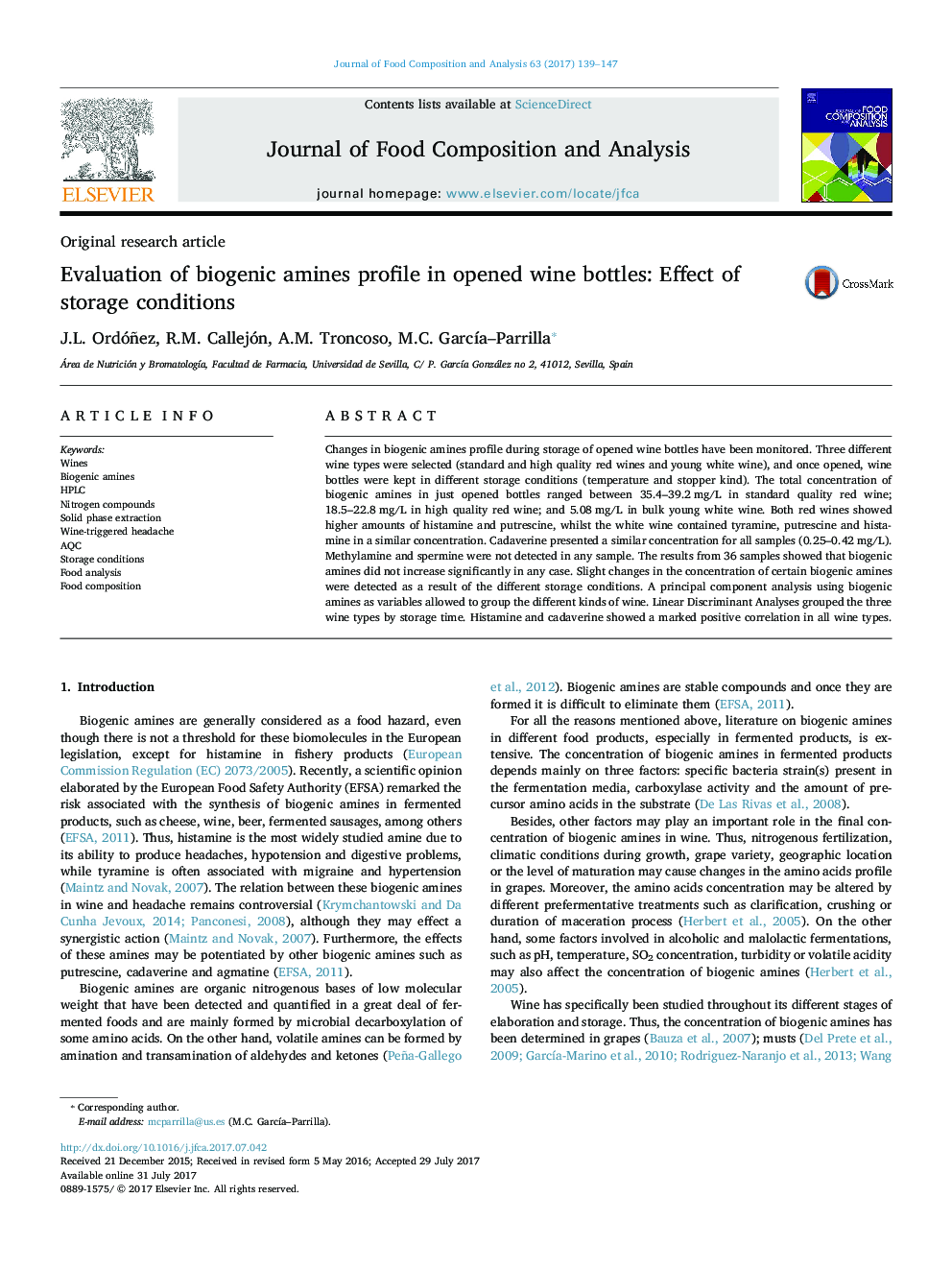| کد مقاله | کد نشریه | سال انتشار | مقاله انگلیسی | نسخه تمام متن |
|---|---|---|---|---|
| 5136825 | 1494479 | 2017 | 9 صفحه PDF | دانلود رایگان |

- Amines were monitored in opened wine bottles kept in different storage conditions.
- Determination of biogenic amines using SPE and AQC as derivatization agent.
- LDA could group three types of wines according to the storage time.
- PCA distinguished the different wines considering biogenic amines as variables.
- Storage time was more important to biogenic amines profile than conditions of storage.
Changes in biogenic amines profile during storage of opened wine bottles have been monitored. Three different wine types were selected (standard and high quality red wines and young white wine), and once opened, wine bottles were kept in different storage conditions (temperature and stopper kind). The total concentration of biogenic amines in just opened bottles ranged between 35.4-39.2Â mg/L in standard quality red wine; 18.5-22.8Â mg/L in high quality red wine; and 5.08Â mg/L in bulk young white wine. Both red wines showed higher amounts of histamine and putrescine, whilst the white wine contained tyramine, putrescine and histamine in a similar concentration. Cadaverine presented a similar concentration for all samples (0.25-0.42Â mg/L). Methylamine and spermine were not detected in any sample. The results from 36 samples showed that biogenic amines did not increase significantly in any case. Slight changes in the concentration of certain biogenic amines were detected as a result of the different storage conditions. A principal component analysis using biogenic amines as variables allowed to group the different kinds of wine. Linear Discriminant Analyses grouped the three wine types by storage time. Histamine and cadaverine showed a marked positive correlation in all wine types.
Journal: Journal of Food Composition and Analysis - Volume 63, October 2017, Pages 139-147